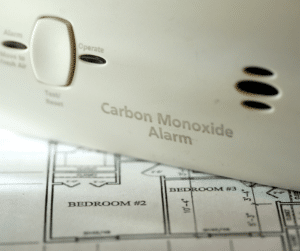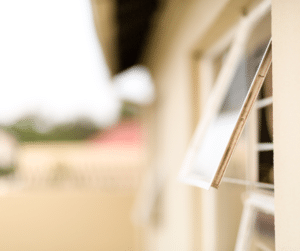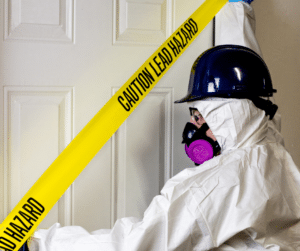5 Hidden Sources of Indoor Air Pollution
Modern homes are developed to be more energy efficient than ever before. Energy-efficient upgrades allow property owners to save money on heating/cooling costs and are good for the environment. Americans spend a significant portion of time indoors, and through increased energy efficiency, less indoor/outdoor air circulation occurs.
Less air circulation increases the importance of keeping the air indoors clean. Air pollution has been linked to heart, respiratory, and other types of medical illnesses, including cancers.
The following list was generated to provide you with indoor air quality knowledge, tips, and other information that you can use to protect your family. We explore air contaminants and reveal the top 5 hidden sources of indoor air pollution.
Types of Indoor Air Pollution

Some sources of indoor air pollution are caused by structural elements, while others are items that we bring into our homes. Indoor air pollutants are generally emitted in gas and particle forms. There is a wide range of potentially hazardous chemical fumes and/or vapors that could pollute the air in your home.
Indoor Air Pollutants May Include:
- Asbestos
- Biological Pollutants
- Carbon Monoxide
- Formaldehyde
- Lead
- Pesticides
- Other Chemicals
Many of these pollutants are not detectable by sight or smell. Professional air quality testing is the only way to test for these hazardous compounds.
Sources of Indoor Air Pollution
Indoor air quality can become tainted by numerous organic and chemical compound threats. Many air pollutants are emitted due to the structural construction of the property. In other cases, these toxic chemicals are emitted by the goods that we bring inside our homes.
1). Furniture
Furniture emits hazardous gases, including formaldehyde, which can be emitted for extended periods of time after manufacturing. Many of the stains, finishes, and adhesives used to craft furniture can omit harmful gases.
In one study, an analysis of an infant crib mattress revealed an emission of over 100 different chemicals, including solvents and alcohols.
2.) Household Cleaning Products
Many household cleaning products have the potential to increase air pollution levels. Products, including air freshers, liquid household cleaners, and aerosol sprays may emit dangerous gases called VOCs.
3). Live Sources of Indoor Air Pollution
Live sources of air pollution may cause a wide range of potential hazards to your family and the structural integrity of your residential home. Live threats could include insects, viruses, mold, fungus, bacteria, and other toxic pollutants.
4). Home Remodels
Home remodeling can cause numerous threats to the health and wellness of your family. Carpet, tile, paint, spackling, and numerous other goods used during remodeling contain hazardous fumes known to irritate the eyes, nose, and lungs.
5). Asbestos
You could also release a dangerous compound into the air, known as asbestos, during a home remodel. Many older homes house dangerous compounds known as asbestos. Asbestos compounds can be found in wall spackling, cement, insulation, tile, and more. These toxic compounds consist of lightweight fibers that remain in the air once they become airborne. Asbestos can cause lung damage, including cancers, and is linked to 255,000 deaths every year.
Regular home air and water quality testing are essential for your family’s health and wellness. Identify and eliminate any potential sources of air pollutants found inside your home. Professional home air quality testing can reveal critical hazards found inside your home.
How to Prevent, Reduce, and Eliminate Air Pollutants

Prevent indoor air pollution by making more informed decisions regarding the purchases you bring into the home. Always check product websites, reviews, content, and warning labels.
Reduce pollutants and improve the quality of the air inside your home with a few simple measures, including:
- Open screened windows and doors to bring clean air inside your home when the weather allows.
- Install air purifiers throughout the home.
- Replace all air filters regularly, including the furnace, air conditioning, humidifiers, and air purifiers.
Controlled Air Temperature and Humidity
Humidity and temperature are important factors in the quality of the air inside your home. House plants are another great way to clean the air naturally.
Maintaining a level of consistent quality air and humidity decreases the risk of live sources of air pollination, including mold and mildew.
Avoid Volatile Organic Compounds
Volatile organic compounds, or VOCs, are dangerous gases that are emitted from numerous products in the home, including cleaning products, air fresheners, and more. VOCs have been linked to numerous health issues, including headaches, vomiting, eye irritation, and respiratory illnesses.
Always Seek Professional Home Remodel Services
The DIY route to home remodels increases your risk and your family’s exposure to potentially hazardous compounds. Seek professional and reputable contractors for any home remodel, repair, and/or goods installation service. This includes professional carpet, tile, and major appliance or goods installation.
Protect Your Family with Professional Air and Water Quality Testing
Protect your family with professional air quality and water testing. Home pollutant levels should be tested regularly, as well as before buying, selling, or remodeling your home.
MD Mold Testing

Contact a team of knowledgeable and experienced technicians to protect your home from asbestos, lead, harmful VOCs, and other health hazards. MD Mold Testing provides clients with an extensive line of professional air and water quality testing services.
MD Mold Testing provides high-quality services for homes and businesses throughout Maryland, Delaware, Northern Virginia, and Washington, DC.
Protect your family by scheduling a professional home inspection today. Contact MD Mold Testing at 301-273-1166 or visit online for more information.





